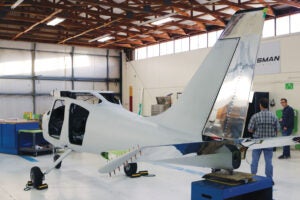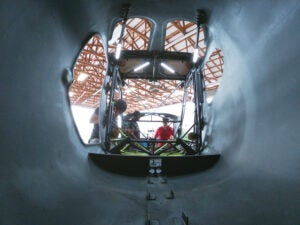There are no halfway measures to describe what has transpired at Glasair Aviation from the beginning of the COVID-19 pandemic to the events preceding the July 4th holiday. Shutting down a company, even partly, is brutal.
But the steps leading up to new CEO Randy Lervold electing to furlough production employees and trim back to core support and engineering personnel were actually some time in the making. Appointed to the role in May of 2019, Lervold, fresh from stints at CubCrafters and Dynon, had more than passing familiarity with the Sportsman and the company that supported it. And even with that, what he found once getting inside the machine, as it were, boiled down to a basic thought: There was a lot to be done.

To be sure, the company had more than a few distractions, with the now canceled Merlin LSA project, working toward certification of the Sportsman, equipping the airframe with a Jet A-burning engine and further refining its builder-assist program, to which it had become almost completely dependent on for kit sales.
Moreover, the need to push forward with design and production changes to improve the product and increase efficiency would be a challenge in the best of times. Let’s be honest here. Most kit manufacturers have just enough essential bandwidth—where money, talent and time are concerned—to handle day-to-day business, manage supply chain matters (which are a larger driver than most builders assume) and work through incremental updates of their products at the same time. A few can build all-new designs while still developing the manufacturing process, but that’s not the norm. And it’s why you see so many iterative designs.
And then COVID-19 hit. It’s worth understanding that the core customer for the Sportsman goes the Two Weeks to Taxi route, which has a high degree of legal builder assist that takes place at the company HQ in Arlington, Washington. The program has factory personnel working almost literally hand-in-hand with builders. Washington was among the hardest-hit states early in the pandemic and was forced to shutter most non-essential businesses. Glasair Aviation, unfortunately, is not considered an essential business, though some manufacturers (Sonex and CubCrafters, for example) were considered essential and were able to stay open.

After the company shut down in the spring and looked ahead at reopening sometime in the summer, it became clear that adhering to CDC recommendations for social distancing and other protective measures would be almost impossible in the close confines of the TWTT program. As COVID cases began to spike again in early summer across the U.S., the likelihood of restarting TWTT in 2020 seemed ever more remote. Without that program, the company would bleed money.
The Other Shoe
Lervold told me that a key focus for him was to improve production efficiencies, which would help drive down costs and boost profitability. He identified several areas in Glasair Aviation where there had not been enough investment in that direction and began the long, unsentimental work of setting better processes into action. Unless you’ve been inside a company undergoing seismic change under new management, it’s hard to appreciate how upending this can be. Sometimes you can move employees into positions that suit their interests and skills better, sometimes you can’t. Sometimes you can improve your supply-chain outlook, sometimes you live with what you have. But you must try to improve.
And at the same time, Lervold recognized that the Sportsman was not all that it could be. It should be easier to build, both in the TWTT form and for do-it-in-the-garage builders. It could be more refined; the price of the kit and the finished TWTT examples had outstripped their finish and luster. (It’s one reason we’re featuring the Sportsman this month—to see what the initial steps toward a more sophisticated example would look like.) Many aspects of the design that experience says could be better rendered have been left alone because there have always been more urgent needs to keep kits flowing and the workshop full.
So that’s where we are. What Lervold calls a “pause” for the company is an opportunity to rebuild and recast. Without the need to keep the production line going and TWTT customers trundling through, it’s possible to ask the questions you wouldn’t dare in a normal status meeting. It’s possible to make large-scale changes to the product and give yourself time to test the results.
I admit to having a dog in this fight. I know the Sportsman intimately and definitely have opinions about it. (See some of them in the cover story.) I want the design to succeed, not just out of sentimentality, but because it’s important for this industry to have strong rivalries and plenty of options for builders.
I’m not so naive to think that all will suddenly be well in 2021. But I do believe this is the right move. I’d rather see someone take a shot at rebuilding the brand and updating the airplane than to let them both die slowly.














I was to believe the Glastar was sold to a Chinese company and infact moved manufacturing to China?